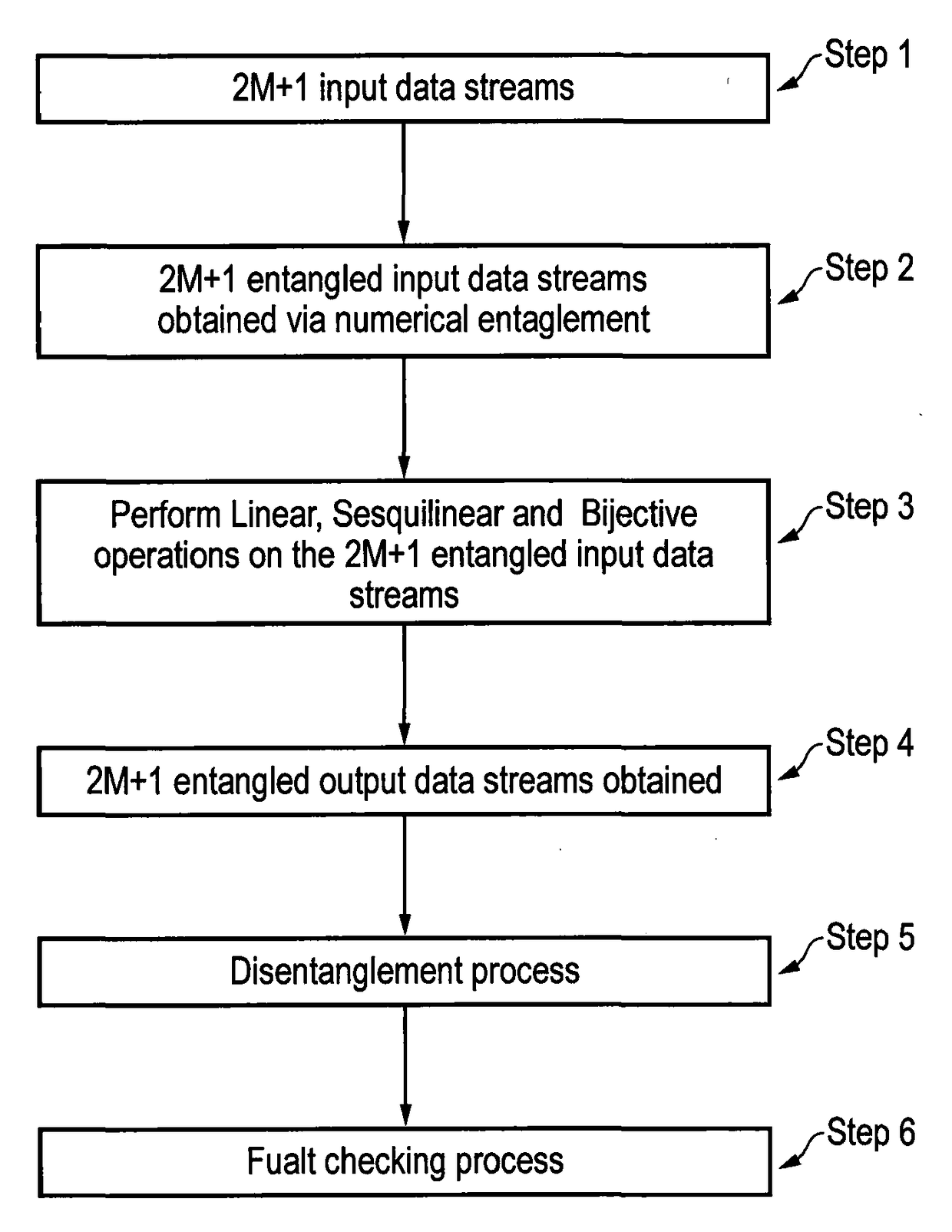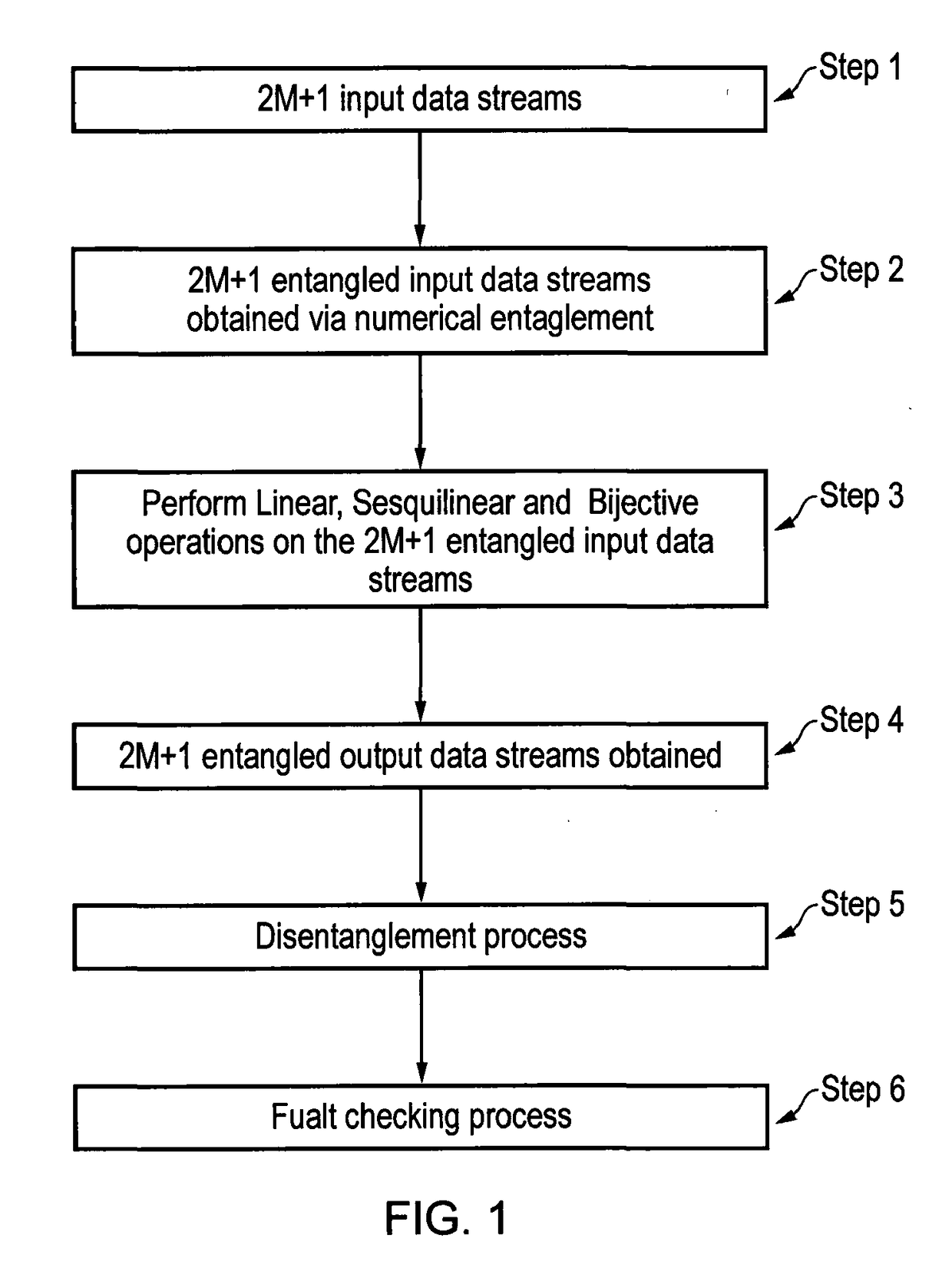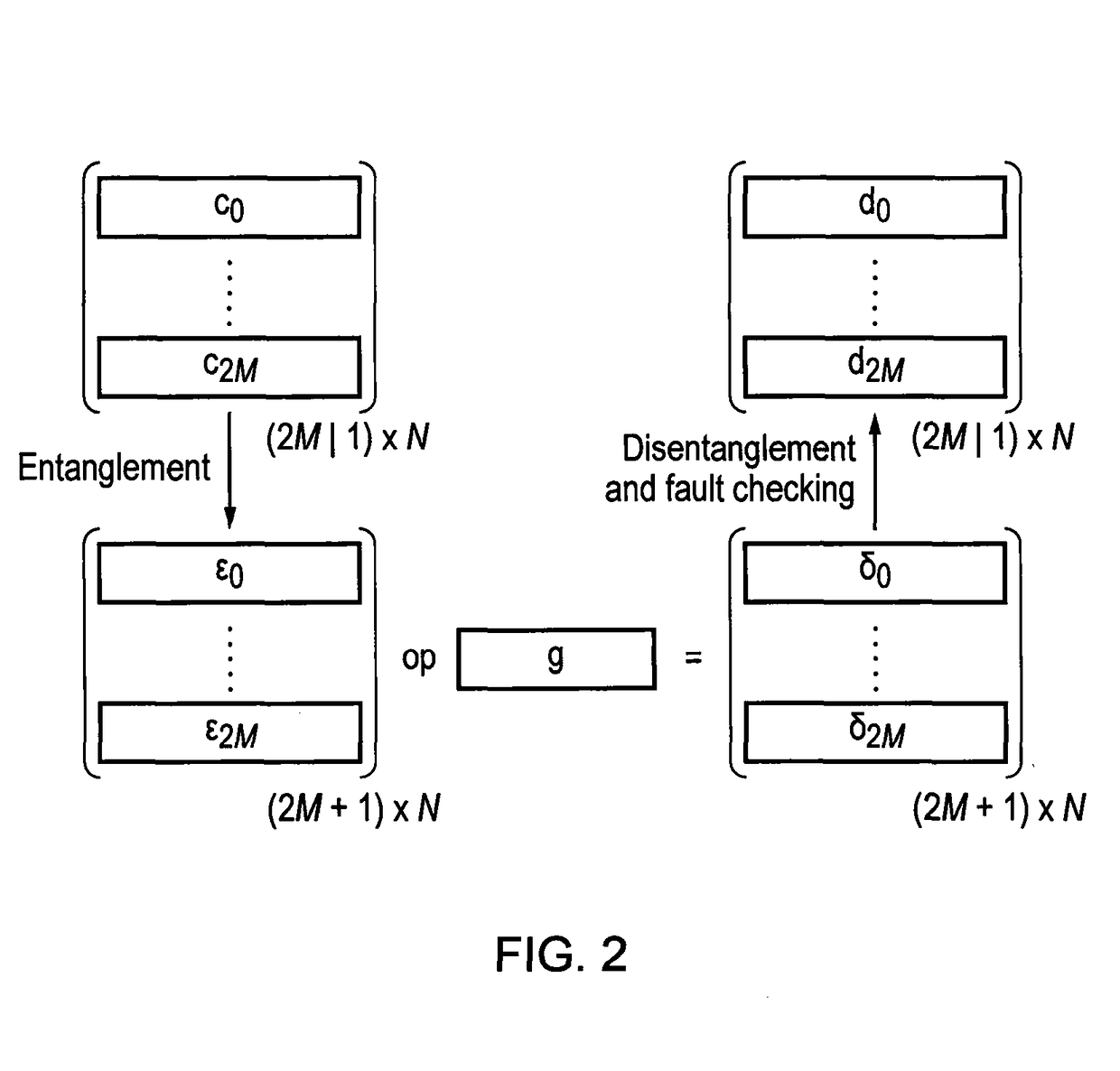Method and apparatus for the detection of faults in data computations
a data computation and fault technology, applied in error detection/correction, computation using denominational number representation, instruments, etc., can solve the problem of reducing the overhead of the percentile implementation of the fault checking process to near zero
- Summary
- Abstract
- Description
- Claims
- Application Information
AI Technical Summary
Benefits of technology
Problems solved by technology
Method used
Image
Examples
example 1
Entanglement in Groups of Three Inputs (M=1)
[0098]In one embodiment of the present invention, the method of fault detection is applied to three input integer data streams, c0,n, c1,n and c2,n, i.e. M=1. The three input data streams, whereby 0≦nα,n, cβ,n and cγ,n, as shown by FIG. 9. This is achieved via linear superposition of the 2M+1 input data streams wherein each input data stream is left-shifted by l-bits of dynamic range and added to another of the input data streams to form an entangled triplet:
cα,n=(c2,n<<l)+c0,n
cβ,n=(c0,n<<l)+c1,n
cγ,n=(c1,n<<l)+c2,n (14)
[0099]That is to say, two input data streams are mixed together to form a single data stream that numerically represents the two input data streams. In order to achieve the detection of any faults occurring in the 2M+1 entangled input data streams, l-bits of dynamic range is sacrificed and it is assumed that the dynamic range of the entangled representation, as shown in FIG. 9, never overflows. Basically...
example 2
ent in Groups of Five Inputs (M=2)
[0111]In another embodiment of the present invention, the method of fault detection is applied to five input integer data streams, c0,n, c1,n, c2,n, c3,n and c4,n, i.e. M=2. By extending the entanglement to five input integer data streams, the dynamic range of the entangled LSB processing is increased. As a result, for every n, whereby 0≦nα,n, cβ,n, cγ,n, cδ,n and cε,n, as illustrated in FIG. 10. This is achieved, as described previously, via linear superposition of the five input data streams wherein each input data stream is left-shifted by l-bits of dynamic range and added to another of the input data streams.
cα,n=(c4,n<<l)+c0,n
cβ,n=(c0,n<<l)+c1,n
cγ,n=(c1,n<<l)+c2,n
cδ,n=(c2,n<<l)+c3,n
cε,n=(c3,n<<l)+c4,n (29)
[0112]In order to achieve the detection of any faults occurring in the 2M+1 entangled input data streams, l-bits of dynamic range is sacrificed and it is assumed that the dynamic range of the entangled repres...
example application 1
r Computing with Obfuscated Data
[0134]A further application of the embodiments of the invention is in encrypted computing or computing with obfuscated data. The inherent obfuscation property of the present invention resulting from the process of numerical entanglement provides inherent resistance to tampering within any single entangled description and provides a practical avenue for encrypted computing of LSB operations. Encrypted computing may be employed in a variety of practical applications, for example, text based query processing, multimedia matching and retrieval, template matching via cross-correlation, integer transform decomposition, filtering and averaging for sensitive data aggregation.
[0135]A computer system 10, as illustrated by FIG. 14, is capable of computing LSB operations on 2M+1 integer data streams in an unbreakable encrypted form. A user may provide control inputs via the input device 1031 instructing the computer system 10 to process the 2M+1 data streams. The...
PUM
 Login to View More
Login to View More Abstract
Description
Claims
Application Information
 Login to View More
Login to View More - R&D
- Intellectual Property
- Life Sciences
- Materials
- Tech Scout
- Unparalleled Data Quality
- Higher Quality Content
- 60% Fewer Hallucinations
Browse by: Latest US Patents, China's latest patents, Technical Efficacy Thesaurus, Application Domain, Technology Topic, Popular Technical Reports.
© 2025 PatSnap. All rights reserved.Legal|Privacy policy|Modern Slavery Act Transparency Statement|Sitemap|About US| Contact US: help@patsnap.com



